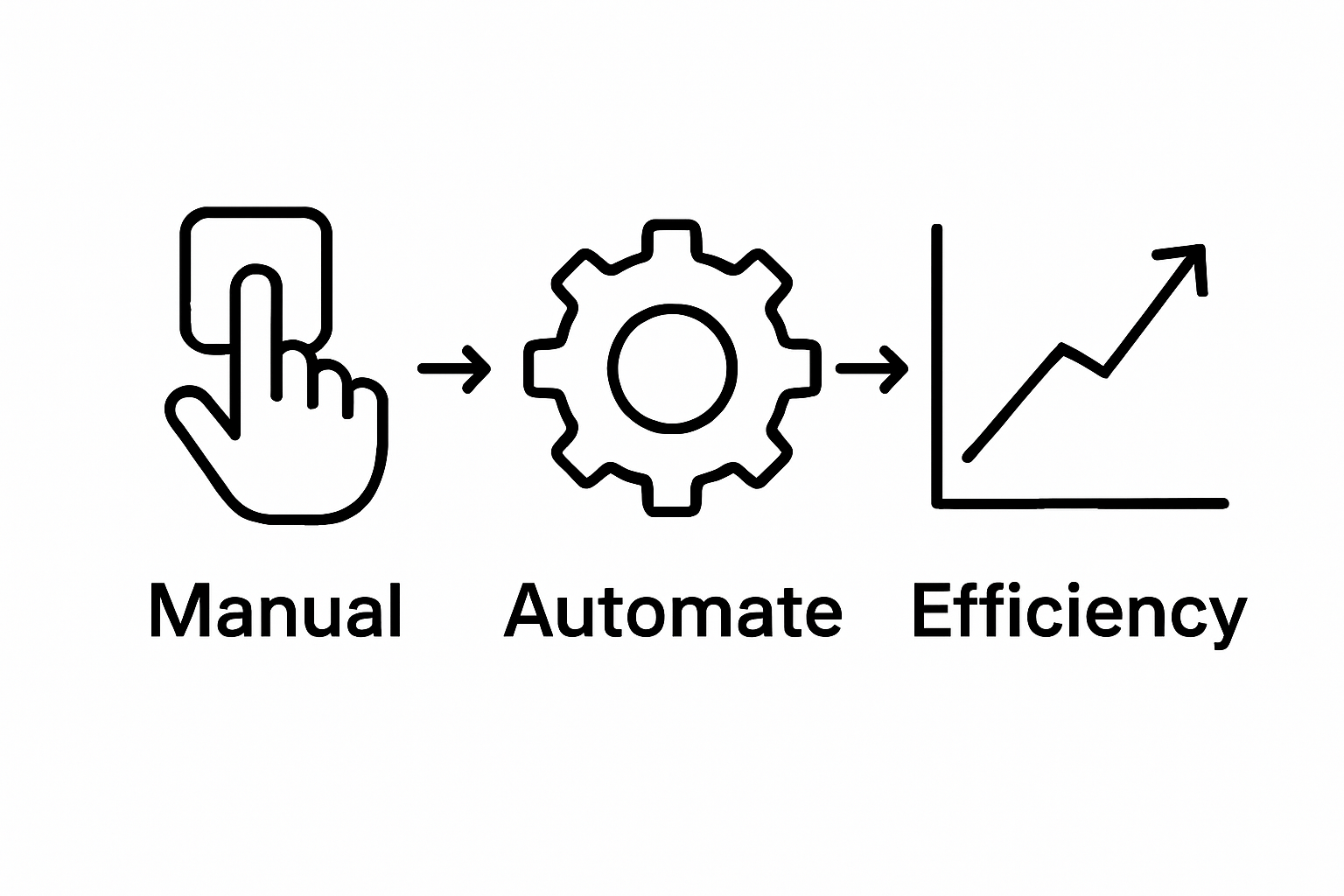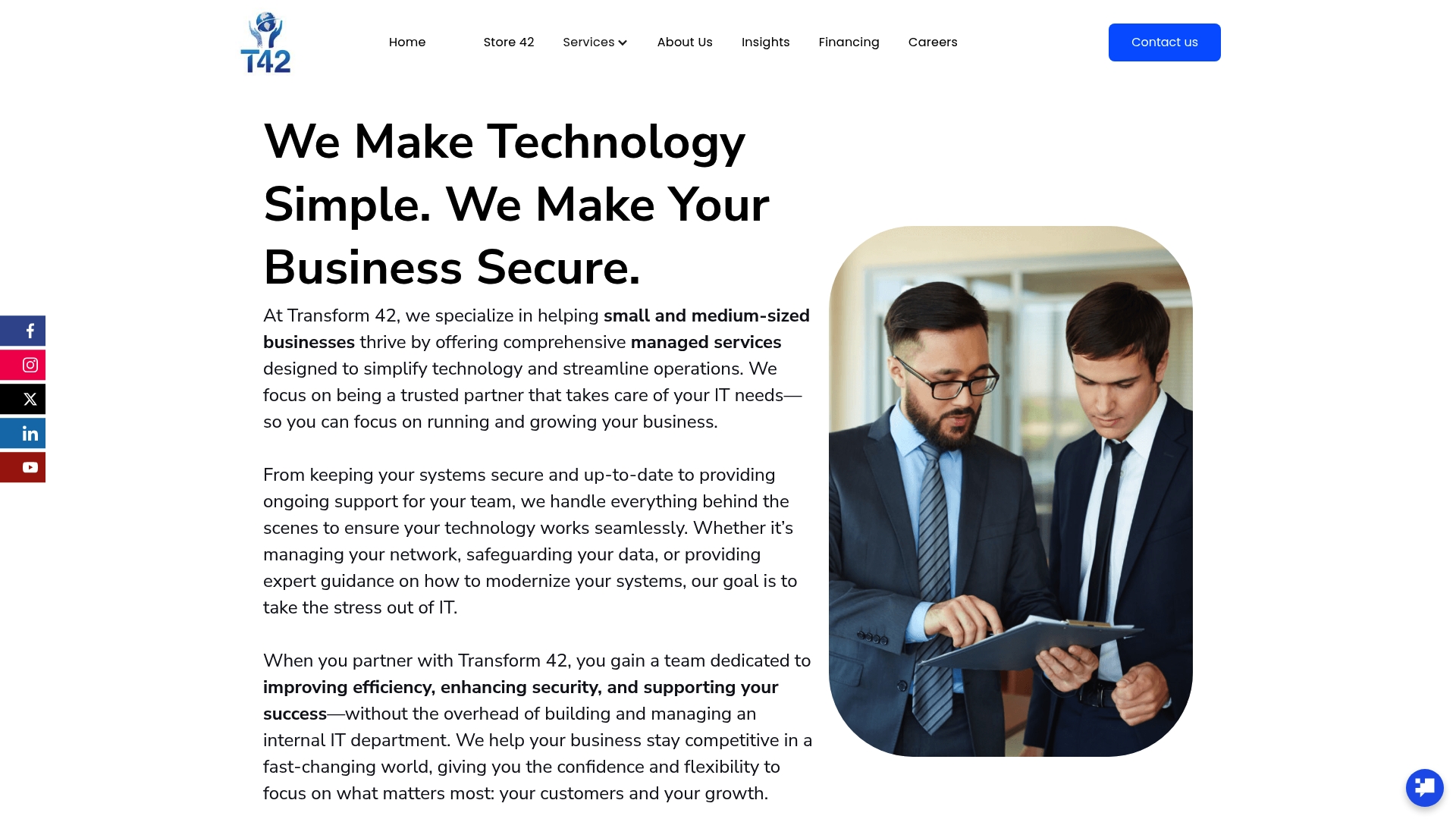Business process automation sounds high-tech, but it is changing how teams handle their everyday work. Companies that use BPA can see up to 50 percent faster execution times and cut costly mistakes. Surprisingly, the real magic is not just in saving time but in freeing up human minds for ideas that actually move the business forward.
Quick Summary
TakeawayExplanationBusiness Process Automation reduces operational costsImplementing BPA can significantly lower expenses by minimizing manual processes and resource wastage.BPA improves accuracy and consistencyBy automating tasks, businesses can reduce human error, leading to more reliable outcomes.Intelligent automation shifts focus to strategic tasksBPA allows employees to concentrate on value-generating activities instead of repetitive administrative duties.BPA enables faster process executionOrganizations can achieve quicker turnaround times for tasks through seamless automated workflows.Comprehensive automation strategies lead to measurable gainsCompanies adopting BPA can expect substantial improvements in productivity and compliance across various sectors.
Defining Business Process Automation and Its Key Components
Business Process Automation (BPA) represents a strategic technological approach that transforms how organizations manage and execute repetitive operational tasks. At its core, BPA is about leveraging software technologies to create systematic workflows that minimize manual intervention, reduce human error, and increase overall operational efficiency.
Understanding the Core Concept
BPA goes beyond simple task automation by integrating complex business processes across multiple systems and departments. It enables organizations to streamline workflows, eliminate redundant activities, and create more intelligent, responsive operational models. Gartner Research defines BPA as a method that uses advanced digital technologies to execute recurring business processes with minimal human interaction.
The fundamental goal of business process automation is to:
- Reduce operational costs
- Improve accuracy and consistency
- Accelerate process completion times
- Enhance regulatory compliance and documentation
Key Technological Components
Successful business process automation relies on several critical technological components. These include workflow management systems, robotic process automation (RPA) tools, artificial intelligence, machine learning algorithms, and integration platforms that connect different software applications.
Modern BPA solutions typically encompass:
- Workflow design and mapping tools
- Automated decision-making engines
- Real-time monitoring and analytics capabilities
- Scalable cloud-based infrastructure
APQC suggests that effective BPA implementations can reduce process execution times by up to 50% while significantly minimizing human error and operational bottlenecks. By transforming manual, paper-based processes into digital, automated workflows, organizations can redirect human talent toward more strategic, creative tasks that drive business innovation and growth.
Below is a table summarizing the key technological components essential for effective Business Process Automation, as discussed in the article.
ComponentFunctionRole in BPAWorkflow Management SystemsDesign and map workflowsStructure and automate business processesRobotic Process Automation (RPA)Mimic human interactions with software applicationsAutomate repetitive, rule-based tasksArtificial Intelligence (AI)Enable intelligent decision-makingEnhance process automation with cognitive tasksMachine Learning AlgorithmsAnalyze and learn from data patternsImprove decision accuracy and adaptabilityIntegration PlatformsConnect different software applicationsEnsure seamless information flow between systemsCloud-Based InfrastructureProvide scalable digital environmentsSupport flexibility and remote process executionReal-Time Analytics ToolsMonitor workflows and generate actionable insightsOptimize processes with data-driven improvements
The Importance of Business Process Automation for Organizations
Business Process Automation (BPA) has emerged as a critical strategic tool for organizations seeking to enhance operational performance, reduce costs, and remain competitive in an increasingly digital business landscape. By transforming manual, time-consuming tasks into efficient, technology-driven workflows, BPA enables businesses to unlock significant organizational potential.
Strategic Operational Advantages
The implementation of business process automation delivers transformative operational benefits that extend far beyond simple task efficiency. Organizations can systematically address complex challenges by creating intelligent, interconnected workflows that reduce human error and optimize resource allocation. Digital.gov emphasizes that BPA allows employees to shift focus from repetitive administrative tasks to more strategic, value-generating activities.
Key strategic advantages include:
- Accelerated process execution times
- Consistent and predictable workflow performance
- Enhanced regulatory compliance and documentation
- Improved data accuracy and reporting
Economic and Productivity Impact
From an economic perspective, business process automation represents a powerful mechanism for driving organizational productivity and cost reduction. By automating repetitive tasks, companies can significantly decrease operational expenses while simultaneously increasing output quality and speed. The economic implications of effective BPA are profound, enabling businesses to reallocate human capital toward innovation and strategic initiatives.

Modern organizations leveraging BPA can expect:
- Reduced labor costs associated with manual processing
- Minimized operational bottlenecks
- Increased scalability of business processes
- Enhanced competitive positioning through technological efficiency
U.S. Department of Agriculture reports that organizations implementing comprehensive process automation strategies can achieve up to 40% efficiency gains across critical operational domains. These improvements translate into tangible benefits such as faster decision-making, improved customer experiences, and more agile organizational structures capable of responding quickly to market changes.
How Business Process Automation Works in Practice
Business Process Automation (BPA) operates through sophisticated technological frameworks that transform complex organizational workflows into streamlined, intelligent systems. These frameworks enable businesses to create digital environments where repetitive tasks are executed with precision, consistency, and minimal human intervention.
Technological Workflow Mechanisms
At its core, BPA functions by mapping existing business processes and creating digital replicas that can execute tasks automatically. Intelligent automation systems analyze current workflows, identify repetitive patterns, and develop rule-based algorithms that mimic human decision-making processes. Digital.gov explains that these systems utilize software robots capable of interacting with multiple digital platforms and applications seamlessly.
Key technological workflow mechanisms include:
- Process mapping and documentation
- Rule-based decision engines
- Cross-system integration capabilities
- Automated trigger and response protocols
Implementation and Execution Strategies
Successful BPA implementation requires a strategic approach that goes beyond simple task replacement. Organizations must carefully analyze existing processes, identifying opportunities for automation while maintaining flexibility and adaptability. The goal is not just to replicate manual tasks but to create more intelligent, responsive operational models.
Practical implementation strategies typically involve:
- Comprehensive process documentation
- Identifying high-volume, repetitive tasks
- Selecting appropriate automation technologies
- Establishing continuous monitoring and optimization protocols
U.S. Department of the Interior highlights that effective BPA solutions can capture, develop, and schedule rules-based business processes without disrupting existing technological infrastructure. By utilizing software bots that replicate human-computer interactions, organizations can achieve faster, more consistent performance across critical operational domains.
Key Concepts and Technologies Behind Business Process Automation
Business Process Automation represents a sophisticated technological ecosystem integrating multiple advanced digital technologies to transform organizational workflows. By combining intelligent systems, data analytics, and rule-based algorithms, BPA creates comprehensive solutions that transcend traditional manual process management.
Foundational Technological Architecture
Intelligent automation technologies form the core of modern business process automation frameworks. These technologies enable organizations to create dynamic, adaptive systems that can learn, predict, and execute complex workflows with minimal human intervention. Arxiv Research highlights how machine learning algorithms play a critical role in enhancing process modeling, decision support, and resource allocation within automated systems.
Key technological foundations include:
- Robotic Process Automation (RPA)
- Machine Learning algorithms
- Artificial Intelligence decision engines
- Cloud-based integration platforms
Advanced Computational Frameworks
Modern BPA solutions leverage sophisticated computational frameworks that go beyond simple task replication. These systems integrate multiple technological approaches to create intelligent process ecosystems capable of complex decision-making and adaptive learning. By combining rule-based automation with predictive analytics, organizations can develop more responsive and efficient operational models.
Advanced computational approaches encompass:
- Neural network processing
- Predictive analytics models
- Natural language processing
- Real-time data integration capabilities
Arxiv Research demonstrates the evolutionary trajectory from basic Robotic Process Automation toward Intelligent Process Automation. This progression represents a significant technological leap, enabling organizations to develop more nuanced, context-aware automated systems that can handle increasingly complex business processes with remarkable precision and adaptability.
Real-World Applications and Benefits of Business Process Automation
Business Process Automation (BPA) has transformed operational strategies across diverse industries, offering practical solutions that drive efficiency, reduce costs, and enhance organizational performance. By implementing intelligent automation technologies, companies can address complex challenges and create more responsive, adaptable business models.
This table compares practical applications of Business Process Automation across different industries, organizing examples as highlighted in the article.
IndustryExample BPA ApplicationOperational Benefit AchievedFinancial ServicesCompliance tracking, fraud detectionImproved accuracy and complianceHealthcarePatient record managementStreamlined administrationManufacturingInventory managementOptimized resource allocationCustomer ServiceInteraction processingFaster response timesSupply Chain LogisticsLogistics coordinationSmoother workflow and integration
Industry-Specific Automation Strategies
Intelligent automation enables organizations to develop tailored solutions that address unique operational challenges. Different industries leverage BPA to solve specific problems and optimize critical workflows. Financial services utilize automation for fraud detection and compliance reporting, while healthcare organizations implement BPA to streamline patient record management and administrative processes.
Key industry application areas include:
- Financial services compliance tracking
- Healthcare administrative workflows
- Manufacturing inventory management
- Customer service interaction processing
- Supply chain logistics coordination
Measurable Organizational Improvements
The implementation of business process automation delivers quantifiable performance enhancements across multiple operational dimensions. Organizations can expect significant improvements in accuracy, speed, and resource allocation. Digital.gov emphasizes that BPA shifts workforce focus from repetitive tasks to strategic, high-value activities that drive innovation and competitive advantage.
Measurable benefits encompass:
- Reduced operational costs
- Enhanced process accuracy
- Faster task completion times
- Improved regulatory compliance
- Increased employee productivity
GSA Research demonstrates that organizations implementing comprehensive automation strategies can achieve substantial performance gains. By systematically identifying and automating repetitive processes, businesses create more agile, responsive operational environments capable of adapting quickly to changing market conditions and technological advancements.

Ready to Eliminate Bottlenecks and Errors in Your Daily Operations?
If you have ever struggled with slow workflow times, costly manual errors, or the stress of keeping up with compliance, you know how vital business process automation can be. The article just explained how automating repetitive and time-consuming tasks not only boosts productivity but also gives your team more room to innovate and grow. Imagine achieving consistent results, enhanced accuracy, and more time for what truly matters in your business.

Do not let manual processes hold your company back. Partner with Transform 42 Inc. and let our technology consultants help you map your workflows, identify automation opportunities, and implement scalable solutions tailored to your unique business needs. Explore our digital transformation expertise and start turning your operational challenges into a source of competitive advantage. If you are ready to unlock productivity and efficiency, visit our main website and schedule your discovery call today.
Frequently Asked Questions
What is Business Process Automation (BPA)?
Business Process Automation (BPA) is a technological approach that uses software to improve and streamline operational tasks by creating systematic workflows that minimize manual intervention and reduce human error.
What are the key benefits of implementing BPA in an organization?
The key benefits of BPA include reduced operational costs, improved accuracy and consistency, accelerated process completion times, and enhanced regulatory compliance and documentation.
How does BPA enhance organizational efficiency?
BPA enhances efficiency by automating repetitive tasks, optimizing workflows across different systems and departments, and allowing employees to focus more on strategic activities rather than administrative tasks.
Which technologies are essential for effective Business Process Automation?
Essential technologies for effective BPA include workflow management systems, robotic process automation (RPA) tools, artificial intelligence, machine learning algorithms, and integration platforms that connect various software applications.





